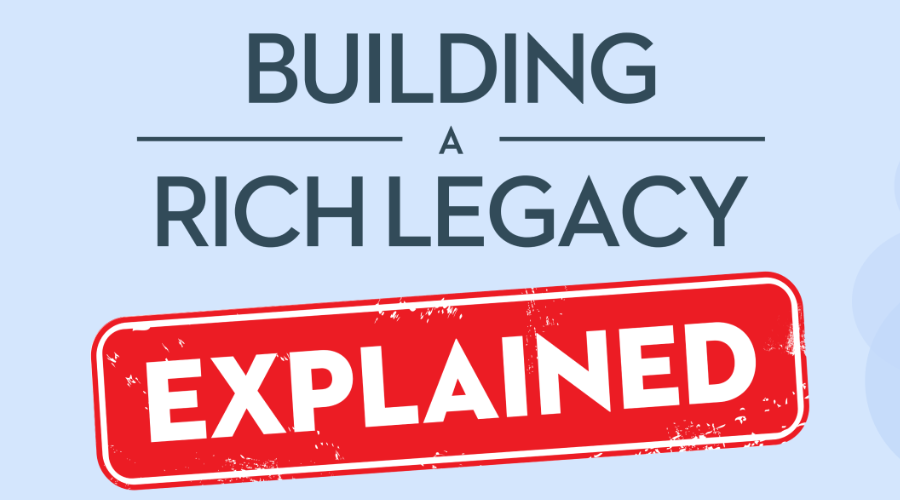If you are close to retirement age and have a company pension, you’ll need to start thinking of how to turn that pension into a retirement income stream. A Life Income Fund (LIF) is one way to convert your pension to income.
In this article, we explain what a LIF is and how it works. We also discuss LIF withdrawal rules and other ways to supplement your retirement income, such as a reverse mortgage.
What is a Life Income Fund (LIF)?
A LIF is a registered account designed to provide you with an income throughout your life using funds from your locked-in pension.
How does a LIF work?
When you retire with assets in a company pension plan or a Locked-in Retirement Account (LIRA), you’ll need to convert those assets to a Life Income Fund or purchase an annuity to start receiving income. If you decide to convert your pension to a LIF, you’ll also have to choose the investments to hold in your LIF, which something that your financial advisor can help you with.
You’ll also have to decide on the amounts you’ll need to withdraw each year from your LIF, based on government withdrawal rates.
LIF Advantages
Life income funds offer many benefits:
- Life income funds grow on a tax-deferred basis.
- You can choose your own investments – qualified LIF investments include mutual funds, stocks listed on a designated stock exchange, government and corporate bonds, and GICs.
- Funds in a LIF are creditor-protected and can’t be removed from your fund to pay off debt obligations.
LIF Disadvantages
Of course, there are disadvantages to having a LIF:
- You must be 55 or older to open a LIF, unlike a RRIF which can be opened at any age.
- You must begin receiving LIF payments in the year after you turn 71.
- Maximum withdrawal limits mean that you cannot access additional income when you may need it – such as to meet an unplanned-for expense or to deal with rising inflation.
LIF withdrawal rules
LIF withdrawal rules state that you must withdraw a minimum amount each year from your fund that cannot exceed a pre-determined maximum. In some provinces, when you turn 80 years of age you must convert your remaining LIF assets into an annuity. Here are some of the other important factors to keep in mind about LIF withdrawal rules.
- You are not required to make a withdrawal in the year that you open your LIF.
- The minimum LIF withdrawal amount is the same for a RRIF and increases as you age.
- You cannot take all of your assets out of the plan at once, as they are meant to provide an income throughout your life.
- The maximum LIF withdrawal amount varies depending on your province of residence – except for pension plans linked to federally regulated areas of employment.
- The maximum withdrawal is calculated based on your age, the balance in your LIF and the rates that are determined annually by provinces.
- Unlike a RRIF, there is a limit on the amount you are allowed to withdraw each year.
LIF withdrawal rates 2023
The table below outlines the LIF maximum withdrawals for 2023. You can see the full table here, along with withdrawal rates for federally regulated areas that fall under the Pension Benefits Standards Act (PBSA) and private pensions in Yukon, Northwest Territories and Nunavut, which also fall under the PBSA.
| Age as of Jan 1, 2023 | Maximum Withdrawal Percentage: Alberta, British Columbia Ontario, New Brunswick Newfoundland, Saskatchewan | Maximum Withdrawal Percentage: Quebec, Manitoba, Nova Scotia |
|---|---|---|
| 55 | 6.51% | 6.40% |
| 56 | 6.57% | 6.50% |
| 57 | 6.63% | 6.50% |
| 58 | 6.70% | 6.60% |
| 59 | 6.77% | 6.70% |
| 60 | 6.85% | 6.70% |
| 61 | 6.94% | 6.80% |
| 62 | 7.04% | 6.90% |
| 63 | 7.14% | 7.00% |
| 64 | 7.26% | 7.10% |
| 65 | 7.38% | 7.20% |
| 66 | 7.52% | 7.30% |
| 67 | 7.67% | 7.40% |
| 68 | 7.83% | 7.60% |
| 69 | 8.02% | 7.70% |
| 70 | 8.22% | 7.90% |
| 71 | 8.45% | 8.10% |
| 72 | 8.71% | 8.30% |
| 73 | 9.00% | 8.50% |
| 74 | 9.34% | 8.80% |
| 75 | 9.71% | 9.10% |
How to access more income in retirement
For some of us, LIF maximum withdrawal limits may make it difficult to meet our cash flow needs in retirement – especially in today’s climate of high inflation and interest rates. That’s why the CHIP Reverse Mortgage from HomeEquity Bank is a retirement income solution that’s growing in popularity.
With the CHIP Reverse Mortgage, Canadian homeowners age 55+ can access up to 55% of the appraised value of their home in tax-free cash. Plus, there are no monthly mortgage payments to make; you pay back the loan only when you move or sell your home.
You can choose to receive the tax-free cash from the CHIP Reverse Mortgage as a lump sum deposit or in a combination of a lump sump and regular monthly deposits. You can use the funds for any of your financial needs, including:
- Funding your desired lifestyle in retirement
- Debt consolidation
- An emergency fund for unforeseen health care costs
- Home renovations to make your home accessible
- Maintain your lifestyle with the increase in the cost of living
Another advantage of the CHIP Reverse Mortgage over relying solely on your LIF is that the money you receive from a reverse mortgage is a loan, so it’s not added to your taxable income and does not affect benefits such as the OAS. Plus, your LIF savings are subject to the performance of the financial markets, which can fluctuate. The funds you receive from the CHIP Reverse Mortgage, on the other hand, provides you with cash flow certainty.
Learn more about how a CHIP Reverse Mortgage works and how it can help meet your cash flow needs in retirement by calling us toll-free at 1-866-522-2447.
Frequently Asked Questions about Life Income Funds (LIFs)
At what age can you withdraw funds from an LIF?
You can withdraw funds from a LIF starting at age 55.
What are LIF minimum and maximum withdrawal amounts?
The minimum and maximum LIF withdrawal amount varies depending on your province of residence (except for pension plans linked to federally regulated areas of employment). You can find the minimum and maximum amounts here.
What happens to my Life Income Fund upon death?
Upon your death, the balance in your LIF is paid to your spouse or beneficiary. Upon the death of your spouse or if your spouse has passed, it goes to your heirs.
Can you withdraw more than the maximum amount from a LIF?
There is a minimum and a maximum amount that you can withdraw each year, which are determined by the government. If you withdraw more than the maximum amount, the extra amount is subject to a withholding tax that you pay to the government.
Are LIF withdrawals taxable?
Yes, LIF income is taxable and must be added to your taxable income for the year in which it is received.
Can you convert a LIF back to a LIRA?
In most cases, you cannot convert a LIF back to a LIRA. However, in some cases, funds can be withdrawn if you are experiencing financial hardship, depending on provincial legislation. Please speak with your financial advisor for specific questions about your Life Income Fund.































